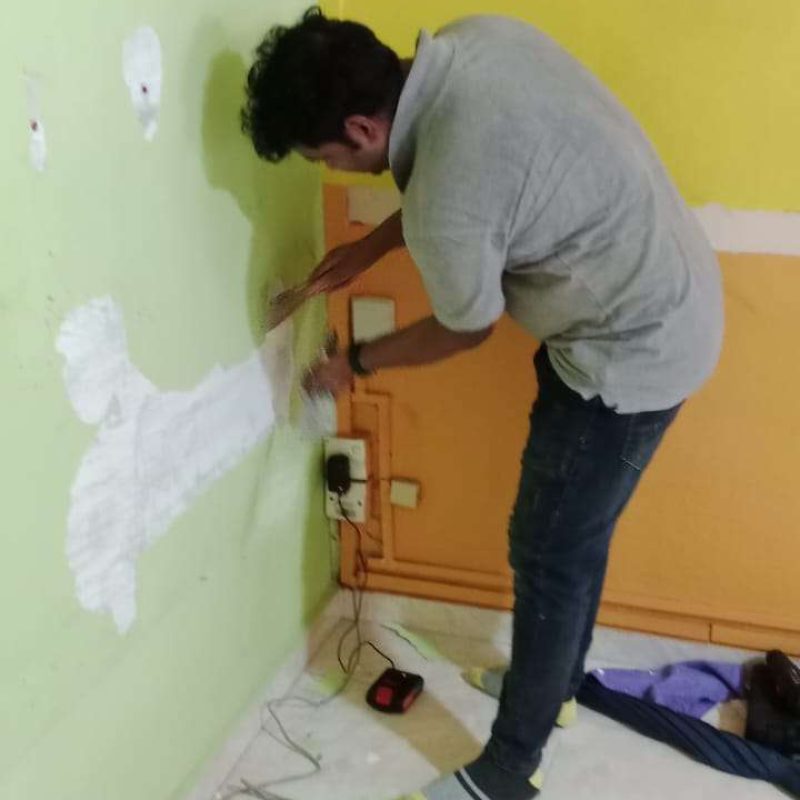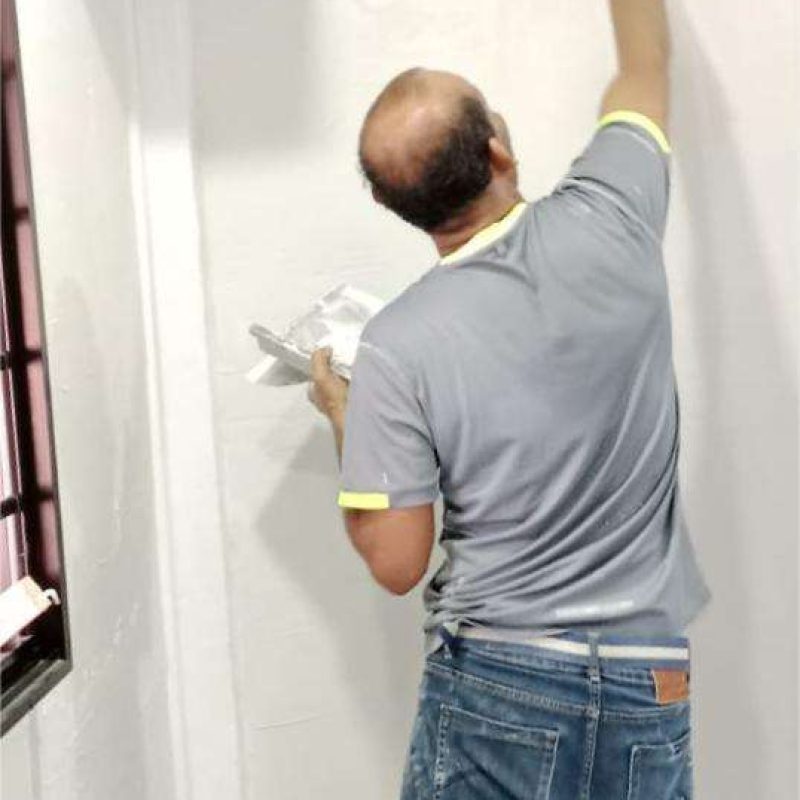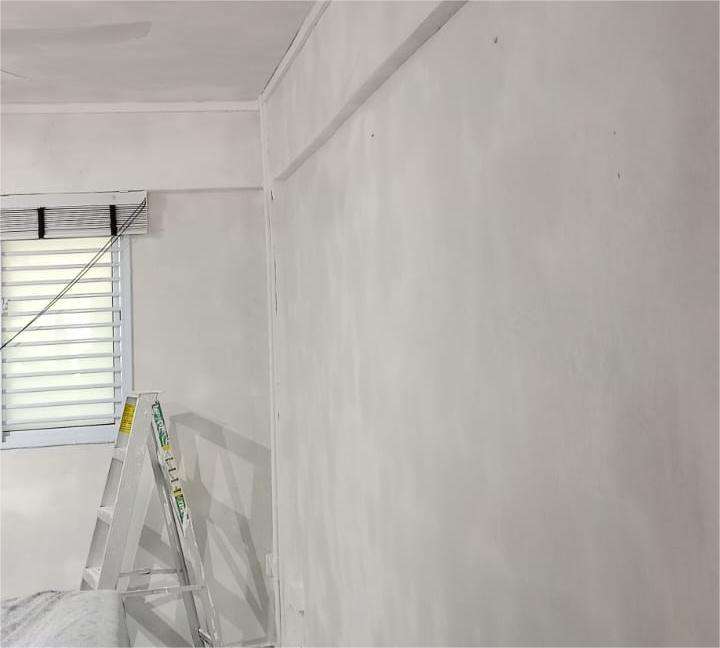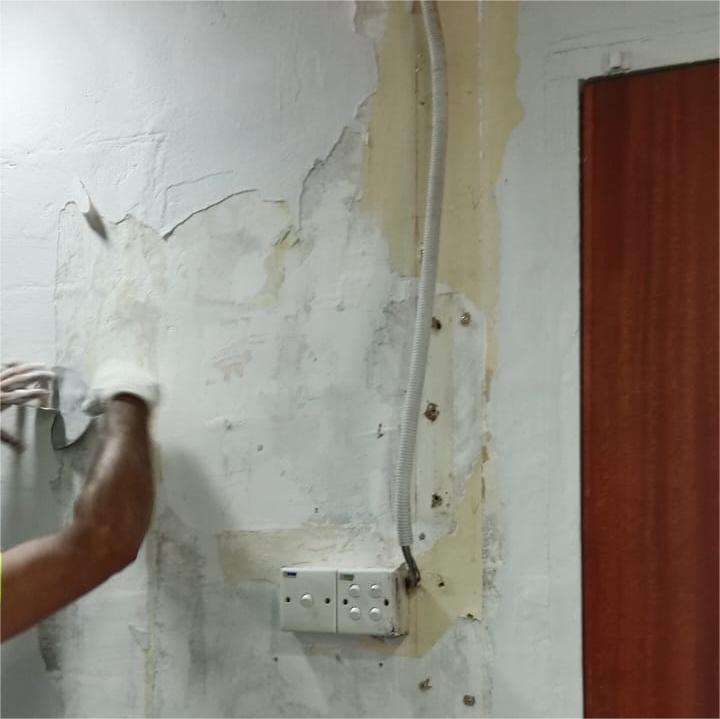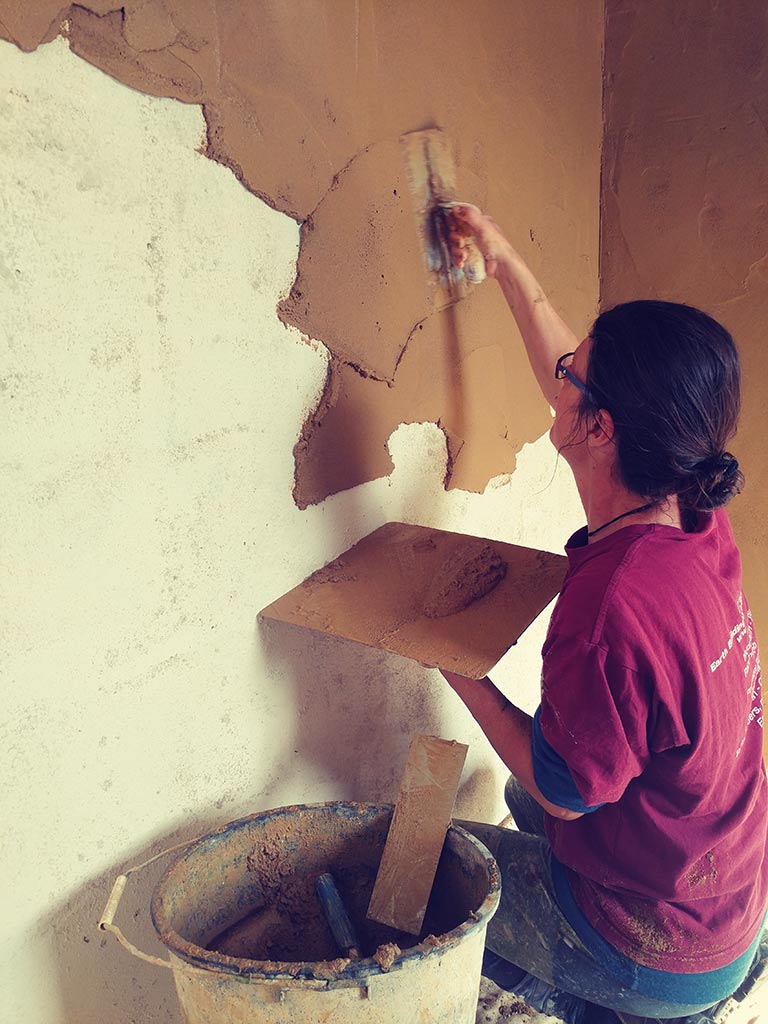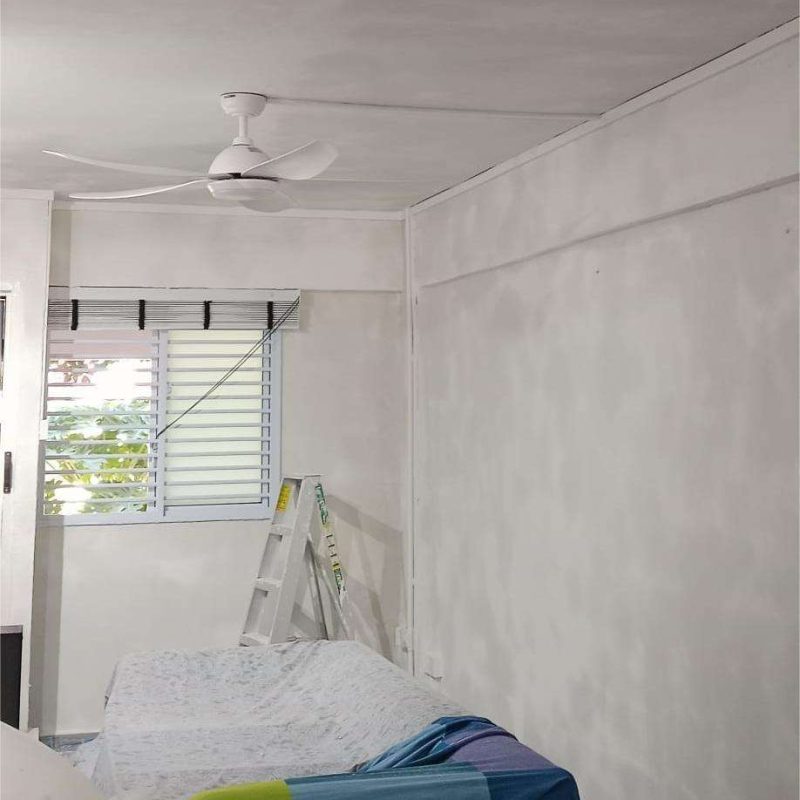Plastered on the Wall: Protection, Durability & Beauty Combined
Plastered on the wall is not only for aesthetics but also for practical reasons. That’s because when a wall is made of brick, stone, or concrete, the surface is often uneven, rough, or cragged. Plaster fills cracks, uneven spaces, and rough parts of the wall. And give it a polished look and smooth surfaces.
Once you attach the plastered wall properly, it bonds firmly with the wall. To protect the wall from moisture penetration. most of all, it increases the beauty and the lifespan of the wall.
Link to related articles or services on your site
To ease your headache we came up with some services that will help you . So you dont have to move to One store to another store or other websitght .
🔊Our services are :
- Smart Space Partitioning
- Professional Painting Services
- Stylish Ceiling Solutions
- Safe & Reliable Electrical Works
- AAC Block
- Seamless Epoxy Flooring
- Cement Scading
- Clean & Precise Hacking
Get your wall perfectly plastered wall today by bdnetworkspteltd
To get smooth plaster & mastering in plastered on the wall
Achieving a perfectly smooth plastered on the wall requires precision, patience, and the right techniques. Like renovating an old house or completing a new construction project, flawless plaster on the walls can elevate the room’s look. Proper preparation ensures a strong attachment to the wall and prevents cracking or peeling.
Plastered wall in the right proportion. otherwise, it won’t bond properly to the wall. After applying the plaster on the wall, wet the edge to prevent noticeable joints. Take a damp sponge or a towel and lightly polish the surface to make it a smoother finish.
Types of Plastered on the Wall Finishes
A plastered wall is more than just a surface—it’s the foundation of a smooth, durable, and visually appealing finish in your home or workspace. Whether you are building new or renovating, plastering plays a vital role in strengthening walls and preparing them for paint or wallpaper.
In this guide, we’ll walk you through the essentials of plastering, why it matters, and how to achieve a flawless look when plastered on the wall.
Benefits of Plastered on the Walls
Plastering is not just cosmetic—it adds real value:
Smooth Surface: A perfectly plastered on the wall eliminates uneven textures and rough patches.
Durability: Protects the wall from wear, tear, and environmental damage.
Moisture Resistance: Modern plasters prevent dampness and water seepage.
Aesthetic Appeal: Once plastered on the wall, it’s ready for stylish paint colors or wallpapers.
There are different ways to get a plastered wall, depending on your project:
Cement Plaster: Strong and durable, ideal for both interior and exterior.
Gypsum Plaster: Quick-drying and smooth, great for interiors.
Lime Plaster: Eco-friendly, breathable, and prevents mold growth.
Each type has unique properties that enhance the beauty and strength of walls once plastered on the wall.
How to Get a Smooth Plastered on the Wall
If you want professional results, here’s a quick overview:
Clean the Surface: Remove dust, dirt, and loose material.
Apply a Base Coat: This ensures the plaster adheres firmly.
Mix the Plaster: Follow proper ratios for strength and consistency.
Plastered on the Wall: Spread evenly using a trowel until fully covered.
Smooth the Surface: Use finishing tools to create a polished look.
Cure Properly: Allow the plaster to dry and strengthen before painting.
Once these steps are done, you’ll have a durable, attractive plastered wall ready for final finishes.
A plastered on the wall is essential for both protection and aesthetics. When plastered on the wall correctly, it gives you a smooth surface that lasts for years and enhances your home’s overall beauty.
Advantages of cement plastered wall
- Strength: Cement plastered wall creates a strong, solid surface and forms a protective layer that prevents moisture and water from penetrating the walls.
- Weather Resistance: Ideal for exterior walls as it withstands rain and temperature changes.
- Fast Setting: It hardens quickly and allows faster construction progress.
- Money-friendly: Widely available and cheaper than other specialty plasters.
Disadvantages of cement plastered wall
-
It has Low Breathability because it traps the moisture that’s leading to dampness in some structures. Learning to crack hard nature predisposes it towards cracking in the long run. It can cause some irritation during application due to its alkaline nature. After some time, it became normal.
Best Uses
In modern buildings of concrete and brick. External walls under rainy or humid conditions. Heavy-traffic zones require durability.
Lime Plastered on the wall
A traditional building material is the lime plaster that is made out of sand, water, and lime. People have used lime plaster for thousands of years, including in ancient civilizations. Unlike gypsum or cement plasters, lime plaster offers several helpful characteristics. it has become a popular alternative in historic building restoration and sustainable construction.
Advantages
Lime plaster allows moisture to evaporate, which makes it ideal for old buildings where trapped moisture can cause damage. Unlike cement, the lime plaster can accommodate slight movements in a building without cracking. Lime production has a lower carbon footprint compared to cement. Naturally resistant to mold and bacteria. Many historic buildings with lime plaster have lasted for centuries.
Disadvantages
- Lime plaster takes weeks to fully harden, which delays construction schedules.
- low strength power: Not as strong as cement plaster, making it unsuitable for high-impact areas.
- Need Skilled Worker for Application: Requires experienced craftsmen for proper mixing and application.
Best Uses
Rehabilitation of historic buildings. Buildings that need breathing, such as stone or brick walls. Green regarding construction projects.
Gypsum Plastered on the wall
Gypsum plastered on the wall is a modern alternative to cement plaster. Manufacturers make gypsum plaster from gypsum (a soft sulfate mineral, CaSO4 · H2O), which comes as a ready-to-use dry powder that only needs to be mixed with water to form a paste. This paste is then applied directly to walls and ceilings to create a smooth and elegant finish. One of the key advantages of gypsum plaster is that it dries quickly. It reduces construction time significantly. It doesn’t require water curing like cement plastered on the wall, and also offers good insulation against heat and sound. Additionally, it’s lightweight, fire-resistant, and reduces the risk of shrinkage or cracks. Due to its clean application and faster setting time, it’s commonly used for interior work in residential and commercial buildings.
Advantages
Smooth Finish: No sanding is required, making it perfect for interiors and adding a sophisticated look. It takes less time to dry, sets within minutes, and fully cures in a few days, unlike traditional cement. It has a lightweight composition, which reduces the structural load on the walls. And resist fire from spreading, naturally slowing down fire from spreading.
Disadvantages
The worst part is that it dissolves in water. Because of that, it can’t be used on the bathroom or exterior part of the wall; it is also bad to use it in wet weather because the humidity can affect its texture. More expensive than cement plaster. Gypsum Plastering wall is not the best deal for using it on an area prone to physical damage
Best Uses
- Interior walls and ceilings in dry areas.
- Decorative mouldings and false ceilings.
- Quick renovation projects.
Clay Plastered wall (Earthen Plaster)
Materials Used
Clay plastered wall Natural building material. Clay plaster is a mixture of clay, sand, and water, sometimes incorporating natural fibers such as straw or hemp. It is one of the sustainable and the most ancient usually applied forms of plaster on walls across the globe, particularly related to the traditional and green trades of building.
Advantages
Clay plaster is a superior material with numerous benefits that qualify. It is an environmentally friendly and healthy point of view. As a green material, it is entirely non-toxic, with all of the ingredients used being natural, non-impact components such as clay, sand, and natural fibers. Breathability is one of its greatest advantages. It helps in regulating moisture in the indoor spaces by passing through the walls, making the place a humane environment, as well as decreasing the possibility of mold growth. Comfort-wise, the clay plaster offers inherent insulation through thermal masses able to keep interiors cool during summer and warm during winter. Potentially reducing the use of energy. It can also be easily repaired; worn-out parts or minor damages can still be fixed easily, and hence it is durable and can be used effectively as a long-lasting finish to modernize and traditional houses.
Disadvantages
It’s weaker against water. It’s not a good idea for wet areas like the bathroom and the external part of the wall. Clay plastered on the wall is not long-lasting, and has to be taken care of it or it will be fragile or break down. Limited access availability is not as commonly available as cement or gypsum.
Best Uses
- Sustainable and natural homes.
- Interior walls in dry climates.
- Artistic and textured finishes.
Venetian Plastered on the wall (Marmorino)
Materials Used
Venetian Plaster (also called Marmorino) is a luxurious wall finish dating back to ancient Rome, and that was brought to prominence in Venice during the Renaissance. Craftsmen make Venetian plaster from lime putty and hand-ground marble dust, creating a smooth, polished surface that, in some cases, texturally, may mimic natural stone or even marble. This ornamental plastered on the wall can frequently be used in numerous thin coatings and polished to recreate a surface with delicate depth, light sheen, and an exclusive texture quality.
Advantages
Venetian plaster, also known as Marmorino, offers a luxurious finish that beautifully mimics the look of polished marble, adding elegance and depth to any interior space. When properly sealed, it becomes highly durable and resistant to moisture and stains. That makes it suitable for both dry and humid environments. One of its most appealing qualities is its decorative versatility. It can be tinted in a wide range of colors to match various design styles from classic to coeval, while maintaining its smooth, sophisticated appearance. Using the Venetian plaster will give a luxurious feel.
Disadvantages
As it gives a luxary look from the outside , The inside materials are that much expencive. Moreover the labur cost is also high because , to handle the expencive material labour Requires expert craftsmanship.ts Only a finishing layer, not for load-bearing walls.
Best Uses
- High-end interior designs.
- Feature walls in luxury homes.
- Restaurants and commercial spaces.
Stucco Plastered on the wall
Builders often implement stucco plaster on both interior and exterior walls for its strength and versatility as a surface finish. Stucco is traditionally a finish created by mixing cement, sand, and water to form a hard, textured surface after drying and curing. It is quite popular due to its resiliency to weather and exceptional strength and can be molded into ornamental designs or smoothed out to achieve a clean finish.
Advantages
Stucco plaster is good for external uses. It protects the wall from the outer weather. Plastered on the wall, the look can be customized. Resist cracking when properly applied
Disadvantages
Risk of Cracking: Poor application leads to cracks. need expert labour. Reinforcement is Needed. Requires metal lath or mesh for stability. Finishes are not smooth; it’s better suited for rustic textures.
Best Uses
- Mediterranean-style exteriors.
- Textured wall finishes.
- High-impact exterior surfaces.
What is single coat plaster and double coat plaster?
A single coat plastered wall is created when a single layer of plaster is applied to cover and protect the base surface. This method is commonly used on internal brick walls, blockwork, or prepared concrete surfaces. Since the plaster is applied directly without multiple coats, it saves time and reduces material costs while still offering a neat, durable finish.
Advantages of Single Coat Plastered Walls
Cost-Effective – Requires less material and labor compared to double coat plastering.
Time-Saving – Builders can complete walls faster, making it perfect for projects with tight deadlines.
Smooth Surface – While it may not achieve absolute smoothness, it still creates a clean, even surface suitable for painting or tiling.
Versatile Application – Works well on interior brickwork, blockwork, and even pre-treated concrete.
Practical Choice – Ideal when the wall will later be finished with paint, wallpaper, or tiles.
When to Use a Single Coat Plastered Wall?
Builders often recommend single coat plastering in situations where:
Speed is a priority (fast project turnaround).
Budget constraints require a low-cost solution.
The wall does not need a perfectly polished finish.
The wall will be covered later with paint, tiles, or another surface finish.
Final Thoughts
A plastered wall using the single coat method is a smart choice for builders and homeowners who want a balance of affordability, durability, and decent finish. While it may not provide the same flawless appearance as a double coat plastered wall, it remains a widely used method for interior walls due to its efficiency, cost-effectiveness, and reliability.
Plastered Wall – Single Coat Plastering Guide
A plastered wall gives any building a smooth and durable surface finish, improving both aesthetics and functionality. Among the different plastering methods, single coat plastering is one of the most cost-effective and time-saving options. In this process, workers apply just one 10–15 mm thick layer of plaster directly onto the surface, making it ideal for areas where a perfectly polished finish is not essential.
Double Coat
Double coat plastered on the wall, which is more common, involves two layers. The first coat, about 10–12 mm thick, levels out irregularities. The second coat, called the finishing coat, is 2–3 mm thick and creates a smooth, polished surface. Many professionals choose this method for high-quality finishes in living rooms and exterior walls, where both appearance and durability matter. Other reasons to use double coat plaster include uneven wall surfaces, the need for improved weather resistance, and the desire for a stronger protective finish.
What causes plastered on the wall to crack?
A plastered wall is designed to provide a smooth, durable, and long-lasting finish. However, cracks can sometimes appear on plastered walls, reducing both their strength and appearance. These cracks can develop for several reasons, often linked to the plaster material, application process, or environmental conditions.
1. Shrinkage of Plaster
One of the most common reasons for cracks in a plastered wall is shrinkage. When fresh plaster is applied, it contains water that gradually evaporates as the plaster dries. If this water evaporates too quickly, the plaster contracts and forms fine hairline cracks on the surface.
2. Poor Surface Preparation
If the base surface is not properly prepared before applying plaster, cracks are more likely to appear. A dusty, dirty, or overly smooth wall surface can prevent the plaster from bonding effectively. Over time, this weak adhesion leads to detachment and visible cracks on the plastered wall.
3. Incorrect Plaster Application
Improper application techniques—such as applying plaster too thickly, not mixing it properly, or failing to cure it correctly—can weaken the surface. This makes the plastered wall more prone to cracking as it settles or dries unevenly.
4. Environmental Conditions
External factors like excessive heat, humidity changes, or direct sunlight can also cause plaster to dry too fast, leading to cracks. Similarly, movement within the wall structure—such as expansion, contraction, or vibrations—can stress the plastered surface.
5. Structural Issues in the Wall
Sometimes, cracks in a plastered wall are not due to the plaster itself but the underlying structure. For example, settling foundations, shifting brickwork, or moisture infiltration can cause the plaster to crack as the wall moves or weakens.
Material Quality Issues
Structural changes in the building, like settling new foundations, thermal expansion, or vibrations, can also stress the plaster to attach to the wall and cause visible cracks. Another cause is not using correct proportions, for example, too much water, insufficient cement/lime, or poor-quality sand that weakens the plastered wall and makes it more prone to cracking. Most importantly, Environmental factors such as rapid drying due to overheating, wind, or direct sunlight, or excessive moisture from leaks and dampness can also damage the plaster surface.
In the end, cracks are usually the result of either poor workmanship, unsuitable materials, or changing environmental and structural conditions.
How to Prevent Cracks in a Plastered Wall?
Ensure proper surface preparation before plastering.
Apply plaster in the correct thickness and mix ratio.
Allow plaster to dry gradually to reduce shrinkage cracks.
Maintain stable indoor temperature and humidity during the curing period.
Fix any underlying structural issues before plastering.
A plastered wall can last for years without cracking if applied correctly on a well-prepared surface under proper conditions. By following the right techniques and preventing rapid drying, you can achieve a strong, durable, and smooth plaster finish.
You don’t always need plastered on the wall before painting, but experts often recommend it, especially if you want a smooth, durable, professional, and premium-looking finish.
If a wall has an uneven surface, is cracked, or has visible defects, plastering or at least patching and skim coating will create a flat, uniform surface so the paint applies evenly and looks consistent. On new masonry walls, plastered on the wall also helps seal the surface, reduce paint absorption, and improve adhesion. However, if the wall is already smooth, well-prepared, and in good condition, such as freshly built drywall or previously well-finished plaster, you can often skip the full plaster wall and just clean, fill small holes, sand, and prime before painting.
Yes, plaster wall can be applied on concrete surfaces, but concrete needs proper preparation first because it’s usually too smooth and dense for plaster to stick well on its own. Without preparation, plaster wall won’t bond properly and may peel or crack over time.
Usually, workers clean the surface of dust, grease, or loose material. Then workers prepare the surface mechanically or apply a bonding coat… In some cases, they use a spatter dash coat or hacking to give the plaster a key. which makes small grooves in the concrete
With proper preparation, plaster bonds well to concrete and creates a smooth, decorative, and protective finish.
At Bd Networks Pte Ltd, plastered on the wall isn’t just a job; it’s our craft. With years of hands-on experience, our skilled team delivers flawless finishes, whether it’s a smooth single coat for quick renovations. A durable double coat for long-lasting protection. We use only top-quality materials to ensure your walls not only look beautiful but also stand the test of time and gain your trust.
Our approach blends modern techniques with attention to detail. Before giving you a perfect surface for painting or decorating. We pride ourselves on punctuality, clean work, and fair pricing because we believe your home or business deserves the best without any hidden costs. From small work to large commercial projects. Our reputation is built on trust, quality, and customer satisfaction in Singapore.
When you choose Bd Networks Pte Ltd, you’re not just getting plaster, you’re getting craftsmanship that will last long.
Yes, you have come to the right place. At Bd Networks Pte Ltd, we deliver professional plastered on the wall at prices that won’t break your budget. Our skilled team works fast, uses top-grade materials, keeps costs low, and makes no mistakes on work, so you get a flawless finish without the hefty bill. Plastered on the Wall quality you can see, savings you can feel!
Plastering walls uses a variety of tools to apply, smooth, and finish the surface. Here are some common tools that are used in plastering walls:
- Trowel(a thin rectangular matel blade attached with an handle)
- Hawk(A square shape flat plate with a central handle below)
- Plaster’s Float(A flat tool its often wood, plastic or sponge faced)
- Plumb bob(A pointed weight that hung on a string.)
- Pytty Knife(it's a flat-bladed tool)
- Corner Trowel(90° angle vented trowel)
- Darby( A tall straight bar to level large flat surfaces)
- Mixing Tools(a manual mixing stick)
- Scratcher(A tool with prongs)
- Sandpaper(an Abrasive sheet)
Yes, in the majority of the cases. You need to prime or otherwise treat the walls before plastered on the wall, since it makes the plaster stick properly and avoids such problems.
Like cracking, peeling, or inconsistent drying. he preparation is specific to the condition of the wall:
- Smooth low absorption surfaces (like concrete or painted walls) often need a bonding agent or primer, such as PVA (polyvinyl acetate) or acrylic-based primers, to give the plaster something to grip onto.
- Plastered on the wall may spray highly absorbent surfaces with water or coat them with primer to slow down moisture absorption, preventing the plaster from drying too quickly and cracking.
- You should clean dusty or greasy walls before priming.
In short, priming isn’t just an optional step. it's a key part to ensure the plaster sticks well, it cures evenly, and lasts longer. Without it, even a skilled plastered on the wall may see the plastering fail prematurely.
First of all, the thickness of a plaster wall depends on the wall, the wall's position, or the type of finish you want (Single coat or Double coat) example
- For the ceiling, we use 5mm to 8 mm thick.
- For exterior plaster wall, 15mm to 20 mm thicker
- For Single coat plastering on the wall, 10mm to 15mm.
- For a double coat, 10mm thick on the first coat and 3mm on the second coat
Yes, you can plastered on the wall waterproof, but standard plaster isn’t naturally waterproof. Because it’s porous, plaster absorbs moisture and may get damaged over time. To make plaster waterproof, or waterproof additives such as waterproofing compounds, silicone-based mixtures, or acrylic bonding agents can be mixed into the plaster during its preparation. Alternatively, workers can apply a waterproof coating over the finished plaster surface. In construction, Builders often use special types like cement plaster wall or polymer-modified plaster wall in bathrooms, kitchens, and outer walls because they offer better resistance to water. However, waterproof plaster should be paired with proper sealing or drainage and maintenance to ensure long-term protection against moisture penetration.
Fast, Professional, and Affordable Plastering in Singapore
At Bd Networks Pte Ltd we combine speed, skill, and savings. Our expert plastering team delivers flawless results on time. every time without the high costs you’ll find else where. By using efficient techniques and sourcing materials smartly, we keep prices low while maintaining premium quality. From quick repairs to full wall resurfacing, you’ll get a smooth, professional finish at a fraction of the usual price. More News Visit

